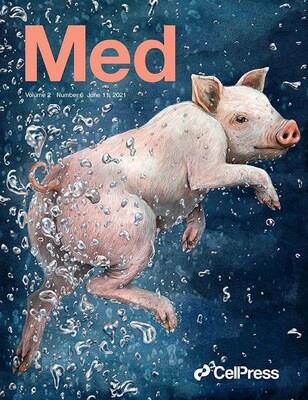(MENAFN- PR Newswire)
Go ahead, crack a joke. Butt seriously, this research from an expert at Cincinnati Children's and the Tokyo Medical and dental University might save lives someday by helping people when they cannot get enough oxygen via their lungs
CINCINNATI, Sept. 12, 2024 /PRNewswire/ -- On one hand,
Takanori Takebe, MD, PhD, would prefer to be remembered for his multiple breakthrough contributions to organoid medicine. However, he may never be forgotten for his work to demonstrate that people can "breathe" through their butts.
Continue Reading

Takanori Takebe, MD, PhD

The journal Med published the initial findings from Dr. Takebe and colleagues demonstrating that mammals can survive otherwise lethal conditions when receiving an enema of liquid saturated with high amounts of oxygen.
Takebe's unusual insight about an alternative way to deliver oxygen to the bloodstream inspired headlines when a successful animal-model study was featured in
June 2021 on the cover of the journal
Med. His team's findings have since attracted attention from media outlets including the New York Times , New York Post , Science NOW , and the Canada-based science television show
"The Nature of Things."
Now, Takebe has received the ultimate snarky scientific honor: an Ig Nobel Prize .
This satiric prize has been awarded to 10 researchers each year since 1991 by the scientific humor magazine
Annals of Improbable Research to "honor achievements that first make people laugh, and then make them think." This year's prizes were presented Sept. 12, 2024, at the Massachusetts Institute of Technology by actual Nobel Prize laureates.
Takebe is a native of Japan who holds academic posts in Tokyo and the United States. At Cincinnati Children's, Takebe is Director for Commercial Innovation at the
Center for Stem Cell and Organoid Research and Medicine (CuSTOM) . In Japan, he is a professor with the Tokyo Medical and Dental University's Institute of Research.
On the side, he began thinking several years ago about an odd, eel-like fish called a loach. Sometimes this freshwater bottom-dweller can wind up in water that's running low on oxygen. When this occurs, the fish augments water-breathing via its gills by gulping surface air directly to its intestines.
What if people could do something similar?
Well, it appears quite possible.
"There are multiple health conditions including respiratory distress in newborn patients that can threaten lives by disrupting our lungs' ability to transfer oxygen to the bloodstream. These include injuries or inflammation affecting the airway, pneumonia filling the lungs with fluid, and so on. During the COVID pandemic, many patients suffered in part because there was a global shortage of ventilators and limited accessibility to ECMO," says Takebe. "Enteric ventilation could serve as an important alternative oxygen delivery route. Further confirmation is needed by our initial studies indicate that our ventilation system is capable of supporting patients experiencing severe respiratory failure."
The butt-breathing concept involves delivering a liquid (called a perfluorocarbon) that can be loaded with much more oxygen than water normally carries.
When delivered through a rectal tube, the lower intestine can absorb oxygen from the liquid and send it directly into the bloodstream-much like receiving an enema.
Takebe and colleagues have shown that this method has helped rodents and porcine models survive low-oxygen conditions that would otherwise be fatal.
Since the initial studies, Takebe and colleagues have co-founded a start-up company called EVA Therapeutics, Inc., to further pursue human clinical trials in Japan. In June 2024, the company announced providing its first dose to a healthy human participant.
More research is needed to evaluate and fine-tune the delivery system, particularly for sick people in multiple settings. Goals include learning how much oxygen can be reliably delivered, for how long, and whether receiving the liquid poses any unforeseen risks.
The good news: Takebe's Ig Nobel honor comes with a monetary prize to carry on the work--a single banknote worth 100 trillion Zimbabwean dollars. Ig Nobel officials say that adds up to about 40 cents in U.S. currency.
Learn more about Takebe's work
Learn How Enteral Ventilation Concept Got Started
Read More About Organoid Research at Cincinnati Children's
Watch an Employee Video About Dr. Takebe
Media Contact:
Tim Bonfield
Cincinnati Children's
[email protected]
SOURCE Cincinnati Children's Hospital Medical Center
WANT YOUR COMPANY'S NEWS FEATURED ON PRNEWSWIRE?
440k+
Newsrooms &
Influencers
9k+
Digital Media
Outlets
270k+
Journalists
Opted In
GET STARTED
MENAFN12092024003732001241ID1108669234
Legal Disclaimer:
MENAFN provides the information “as is” without warranty of any kind. We do not accept any responsibility or liability for the accuracy, content, images, videos, licenses, completeness, legality, or reliability of the information contained in this article. If you have any complaints or copyright issues related to this article, kindly contact the provider above.